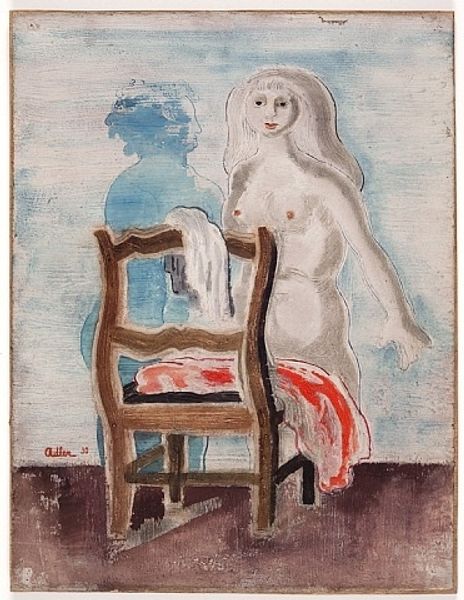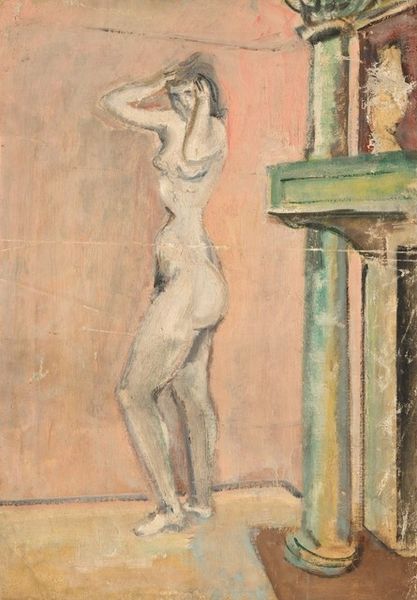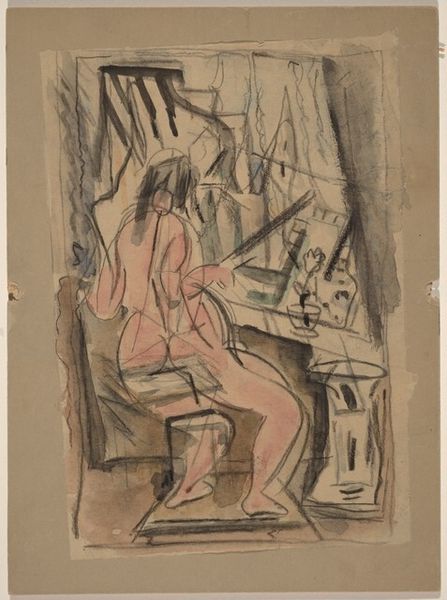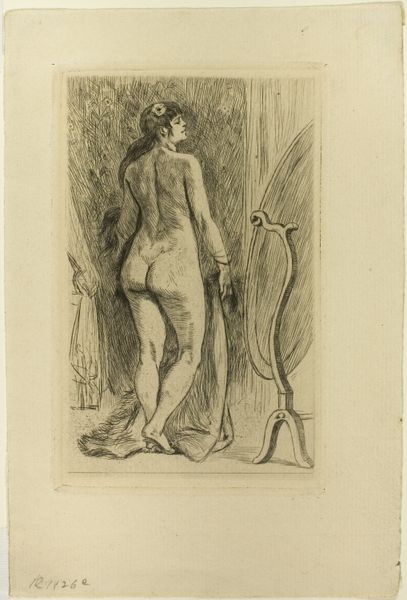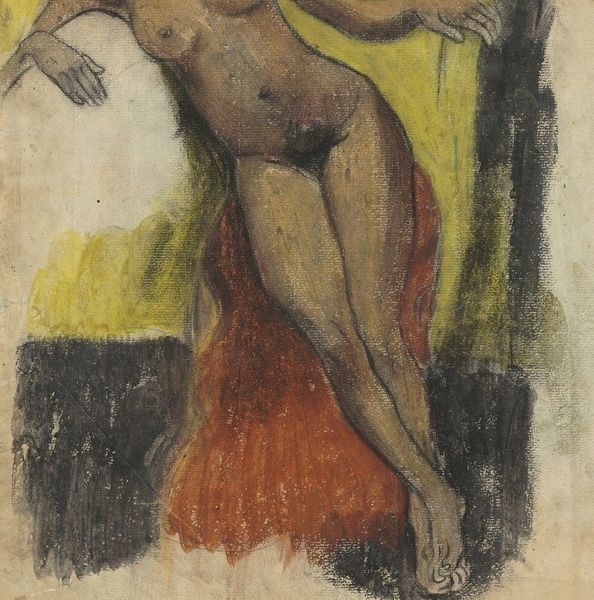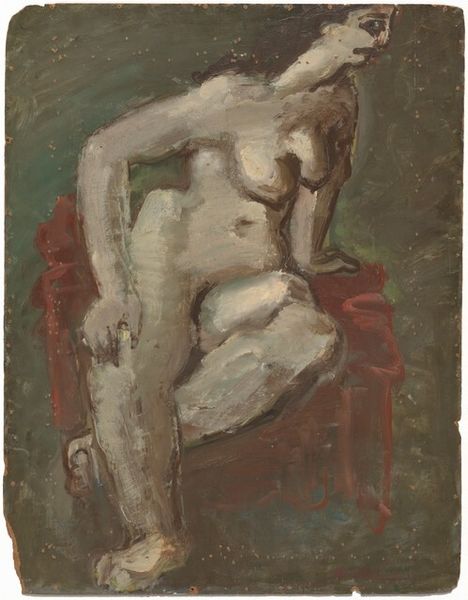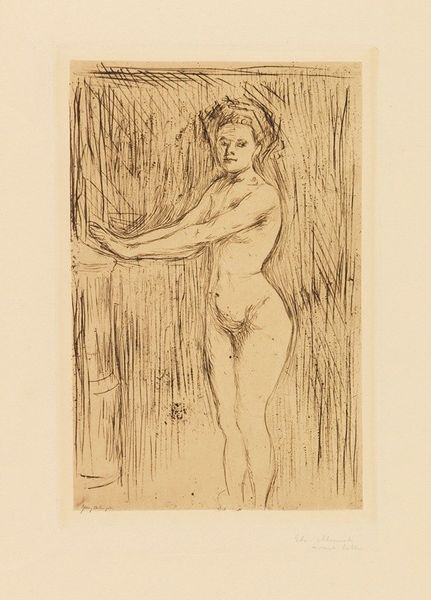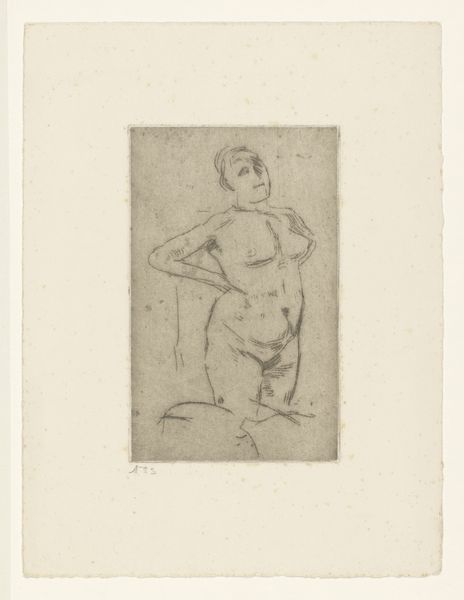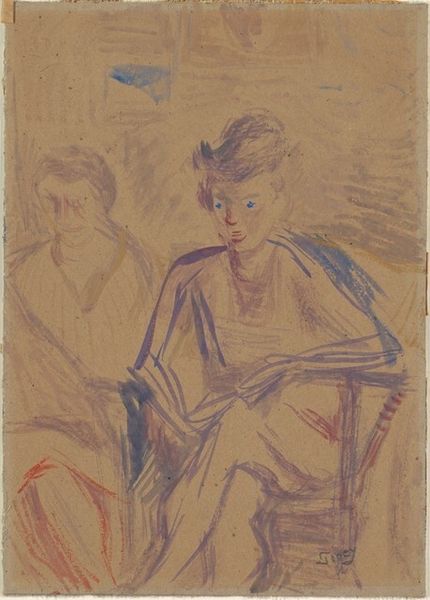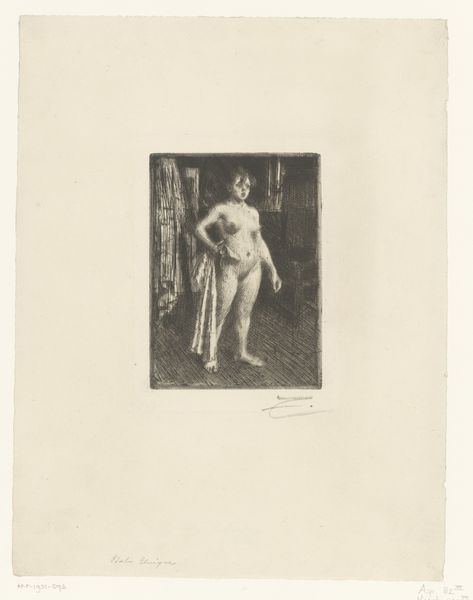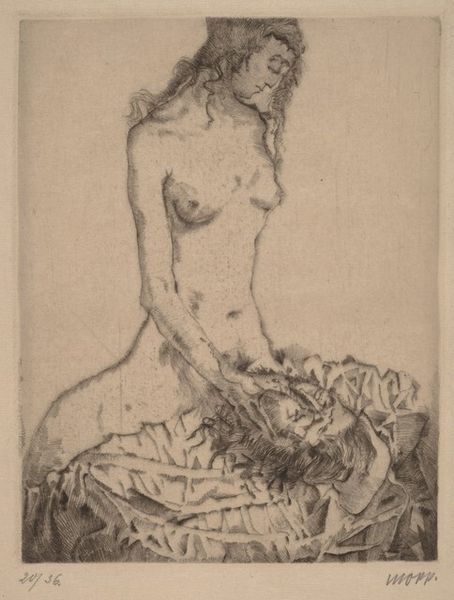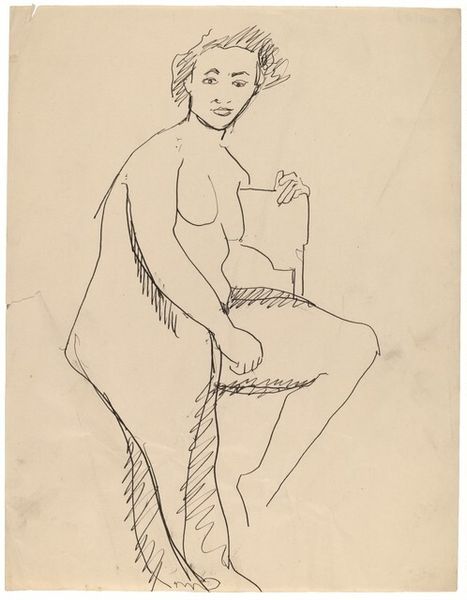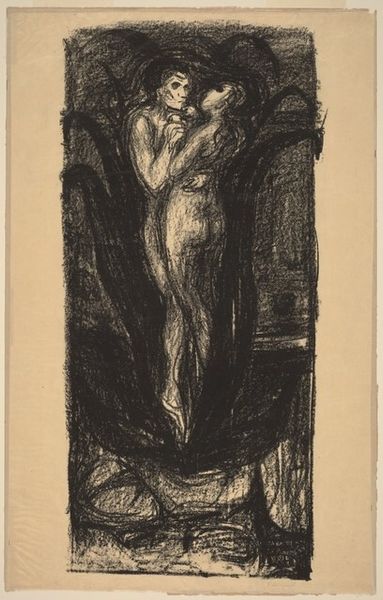
Dimensions: painted surface: 32.4 x 25.4 cm (12 3/4 x 10 in.) support: 35.9 x 29.2 cm (14 1/8 x 11 1/2 in.)
Copyright: National Gallery of Art: CC0 1.0
Curator: Here we have Mark Rothko’s “Untitled (nude),” created around 1937-1938. It’s an oil painting and exemplifies his earlier representational work before his signature abstract style. Editor: My immediate impression is one of muted intimacy. The composition feels deliberately claustrophobic, focusing the viewer's attention on the pale figure against the earthy backdrop. There's a tangible sense of vulnerability and almost voyeuristic secrecy. Curator: Absolutely. The depiction of the nude figure is especially interesting. It resists the male gaze, presenting the body as almost vulnerable. It invites considerations of self-perception versus objectification of women within art history and society, particularly within the social climate of the late 1930s. What were the artist’s intentions with such presentation? Editor: The semiotics of colour are also striking, aren’t they? Rothko creates a sense of detachment, almost as if observing her, a character rather than a lived figure. It reminds us of expressionism. Curator: Considering Rothko's Jewish heritage and the rise of fascism during this period, it could also be interpreted as a subtle commentary on displacement, vulnerability, and the fragility of identity amidst political turmoil. What the composition signifies and hides becomes central. Editor: That’s thought-provoking. Considering his later abstraction, one can already notice the careful orchestration of space and the reduction of forms, a deliberate structuralist approach, laying the foundations for what he later developed. The way the subject seems confined inside, yet there is an easel on her right that can become her tool for emancipation. Curator: It certainly offers a glimpse into the artist's evolving engagement with existential themes, identity politics, and personal anxiety within a world on the brink of war. It’s interesting to consider it in terms of art as a means of political commentary. Editor: Absolutely, each time we look at the painting new visual interpretations seem to come out!
Comments
No comments
Be the first to comment and join the conversation on the ultimate creative platform.
